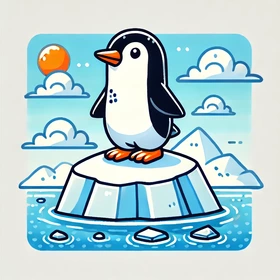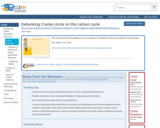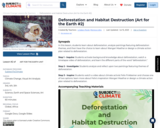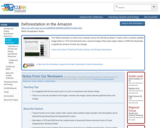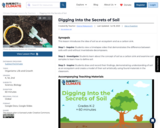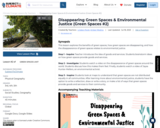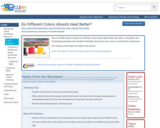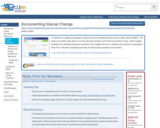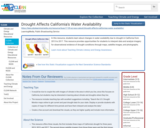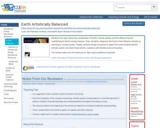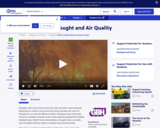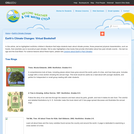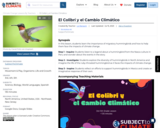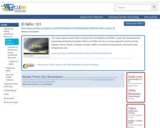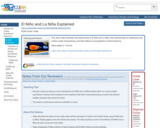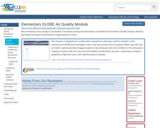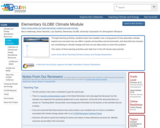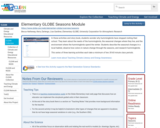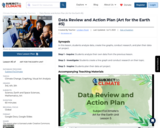
SYNOPSIS: In this lesson, students analyze data, create line graphs, conduct research, and plan their data art project.
SCIENTIST NOTES: This lesson builds students' data analysis and research skills. Students learn how to use data to create an appealing artwork that can explain and raise awareness on climate change impacts. All materials are properly sourced, and datasets for analysis are accurate. The lesson has passed our science credibility process.
POSITIVES:
-Students learn how to create a line graph that includes title, x-axis label, y-axis label, data points, and a line connecting the data points.
-Students think critically in their groups and in whole class discussions.
-Students practice media literacy skills when conducting research.
ADDITIONAL PREREQUISITES:
-This is lesson 5 of 6 in our 3rd-5th grade Art for the Earth unit.
-Students should have a basic understanding of data analysis and why graphs are useful tools to view data.
-You may have to guide students to good resources when they are conducting research on their topic in the Investigate section. A great tip when students are doing online research is to use the PARC method, which stands for Purpose, Author, Reliability, and Currency. Students can ask of every website:
-What is the purpose of this website?
-Who is the author of this website?
-Is this website reliable?
-Is this website current?
DIFFERENTIATION:
-It may be best for students to collaborate when creating their line graphs. Grouping students with varying levels of logical-mathematical intelligence and spatial-visual intelligence would probably work best.
-Line graphs can also be created using technology tools, including iPads or Chromebooks.
-Your students may or may not have different line graphs. If the data comes from a true class campaign, all students will have the same line graph. If students gathered their own data for different issues or used the different available data from NASA, their line graphs will be different.
-The Inspire section is meant for students to prepare to complete their projects. They will actually finish their projects in the sixth lesson in this unit after discussing more about the impact of art on one's feelings, how colours affect emotions, and how to appeal to different audiences.
- Subject:
- Arts and Humanities
- Geoscience
- Mathematics
- Physical Science
- Space Science
- Visual Arts
- Material Type:
- Lesson Plan
- Provider:
- SubjectToClimate
- Author:
- Lindsey Pockl
- Monica Lilley
- Date Added:
- 06/28/2023
